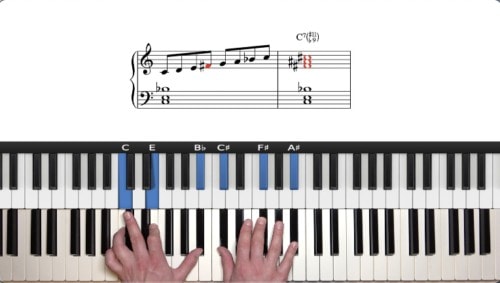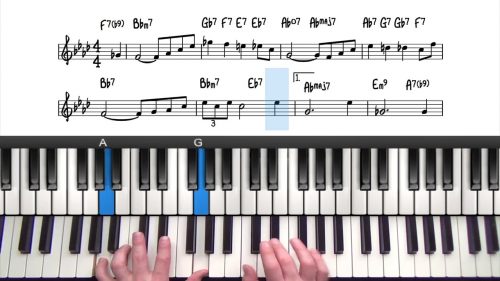The Difference Between Keys & Scales
In this lesson we will discuss the concepts of scales and keys. For anyone who wants to learn to play jazz, blues, or any styles of improvised music, the first step is to understand the concept of scales and keys.
Scales and keys are often interchanged and confused, and so in this lesson we will clearly explain what each term means and how they apply to jazz.
Scales and keys are in some ways similar, but at the same time very different which is why it can be tricky to differentiate between the 2 terms.
What Is A Scale?
A scale can be defined as a series of notes, or a series of pitches. There are many different types of scales, some examples would include major scales, minor scales, pentatonic scales, blues scales, and whole tone scales.
What Is A Key
Keys are built around a specific scale – for example C Major Scale – but when playing in the key of C we are not restricted to just the notes and chords that are derived from that C Major Scale.
If we are playing in the key of C Major, the C major chord, is known as The Tonic or The Home Base. This is the point in which the harmony resolves and rests, and all of the other chords that we play are acting like road signs that eventually point us back to the tonic.
Lesson Downloads
-
Diatonic 7th Chords & Progressions File Type: pdf
Practice Tips
-
Understand that the terms scales and keys have 2 very different meanings.
-
Study the notation examples in the lesson and transpose the chord progressions into other keys.
- Remember that scales are not the magic bullet to learn improvisation, for more information watch our improvisation courses.








Hi Hayden, thank you for a great lesson and resource. I have a question regarding the download for this video.
The 36251 progression seems to read like a ii-V-ii-V-1 – is that correct ? But the 6 in C major is a minor chord ?
In the 36251, could you explain about the E minor 11 b5 chord, as in the key of C, E minor diatonic would not have any accidentals ?
I thought it might possibly be derived from the G melodic minor scale ?
The A7 alt, is a Dominant chord, but is still the 6th of the C major Tonic ?
Could you clarify this for me ?
many thanks, Natasha
Hi Natasha 👋
Yes we can view these voicings as ‘stacked 25 progressions’. As you will see in the next lesson we can also approach the 3 chord (E-7) chord with a 25 which would be F#-7b5 to B7.
For each voicing in the 36251 progression, we have the creative freedom to voice them as we like. We can voice the minor chords as plain minor, or -7b5 (the b5 adds a darker colour). In addition we can change all of the chords to dominant quality if we like and then we simply have a stack of dominant chords a 5th apart.
Try the following chords E7 –> A7 –> D7 –> G7 –> Cmaj7 and you will hear that the progression sounds great. We also have the creative freedom to add extensions and alterations to these dominant chords as we see fit.
I like to see the diatonic 7th chords as the ‘basic framework’ and we can then alter the chord qualities (usually by turning minor chords into dominant chords) and also tweaking the chord colours (adding the b5 into minor chords, and adding alterations to dominant chords).
In the next lessons we explore tritone substitutes and passing chords.
Let me know if you have any further questions here.
Cheers,
Hayden